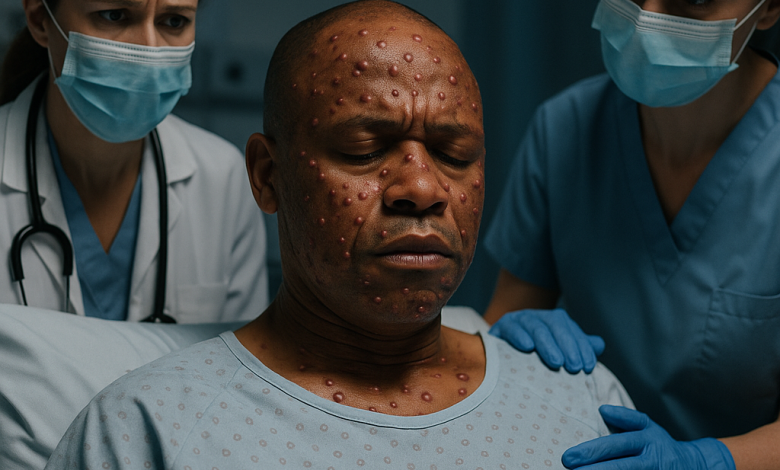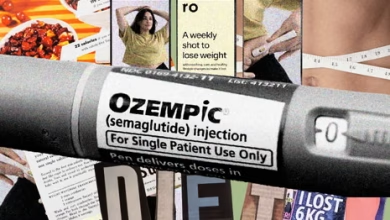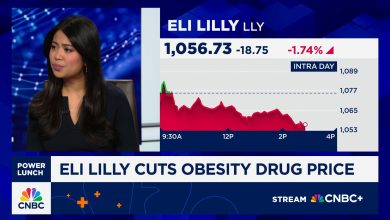Health Officials Alarmed as Three Severe Mpox Cases Emerge

A wave of concern has rippled through global health circles as reports confirm three severe cases of Mpox — previously known as monkeypox — emerging in the United States, without recent travel history. These are not just isolated events: they represent a pivotal moment in infectious‐disease surveillance and public health response. For you reading this, the message is clear: what happens in one community may soon have implications around the world, including right where we live.
What exactly is Mpox?
To understand the urgency, we must first get clear on the virus itself.
- Mpox is a viral disease caused by the monkeypox virus, a member of the Orthopoxvirus genus.
- According to the World Health Organization (WHO), the virus has two major clades: Clade I (formerly known as the Central / East African clade) and Clade II (West African clade).
- Typical symptoms include: fever, headache, muscle aches, back pain, enlarged lymph nodes, followed by a characteristic rash which may progress from flat sores to fluid‐filled blisters and eventually scabs.
- While many infections are mild and self‐limiting, serious cases can occur—especially when the Clade I strain is involved.
In short, Mpox is not brand new, but the recent developments are unusual and demand our attention.
The Surprise Severe Cases: Why They’re Raising Red Flags
The core of today’s concern lies in these facts:
- Three unrelated individuals in California (Long Beach and Los Angeles County) were diagnosed with the Clade I strain of mpox, a more severe variant, and crucially, none had recent travel to Africa, where Clade I is endemic.
- All three required hospitalization — a sign that the illness can be serious.
- The fact that transmission appears to be locally acquired (no travel history) suggests community spread is already underway.
- Clade I historically has higher rates of severe illness and death compared to Clade II. For example, some sources estimate fatality rates for Clade I in Africa ranged from 1% to 10% in certain settings.
All these combine into a potent alarm: a more dangerous version of the virus is already moving within a large and dense community in the U.S. — something previously thought to be mostly linked to travel to Africa.
Why It Matters to You and Your Community
This isn’t just specialist talk for health experts. Why should you care? Because these developments have real implications:
A. Increased risk of spread
When a virus previously tied to imported cases begins appearing locally—and without obvious travel links—it means our standard assumptions may no longer hold. The pathways of spread can widen, and the virus may move into networks, households, and settings we hadn’t fully considered.
B. Potential for more severe outcomes
Clade I’s higher severity means that what may have appeared as a low risk for most could shift. For individuals with weakened immune systems, underlying health conditions, or in certain demographics, the consequences could be more significant.
C. Need for vigilance
When health officials say “the risk to the general public remains low,” that’s not the same as “no risk.” This moment is about being alert: if your behavior, environment, or contact network could intersect with exposure, now is the time to act.
D. Public health ripple effects
Beyond individual risk, there are consequences for healthcare systems (hospital admissions, specialized care), for populations historically underserved, and for our broader public health response. When an outbreak shifts its character, it demands new strategies.
What’s Happening Behind the Scenes: Health Officials’ Response
Health agencies are already ramping up efforts. Some of their key actions:
- The California Department of Public Health (CDPH) and local health departments are conducting enhanced surveillance, contact tracing, and laboratory investigations to identify how these cases occurred.
- Officials are urging high‐risk populations — including men who have sex with men (MSM) and others in networks with close physical contact — to pay special attention and consider vaccination where eligible.
- The two‐dose vaccine JYNNEOS (approved in the U.S. for mpox) is being recommended for those at risk of exposure.
- Public communications emphasize that while the general risk remains low, early detection and isolation are vital to preventing wider spread.
In effect, the gears of the public health system are turning, but the speed, breadth, and scale of the response will matter greatly.
How You Can Protect Yourself and Others
Because this is not hypothetical. Whether you are in a high‐risk group or not, some practical steps can help reduce risk, protect your family, and contribute to community safety.
1. Know the symptoms
- Be alert for early signs: fever, chills, muscle aches, swollen lymph nodes. Then monitor for the distinctive rash – often starting on the face or palm/soles or in the genital/anal region. Understand that the rash may progress: raised lesions → fluid‐filled blisters → scabs and fall off.
- Seek medical advice promptly if you notice these symptoms or have known exposure to someone with mpox.
2. Reduce high-risk exposures
- Avoid close, intimate physical contact (skin‐to‐skin) with persons who have suspicious rashes or lesions.
- Do not share personal items (linens, towels, clothing) with someone who is infected or suspected.
- Recognize that the virus can transmit through contaminated materials or close contact — not just through casual public contact.
3. Check vaccination eligibility
- If you belong to a group with elevated risk (e.g., MSM with multiple partners, immune‐compromised individuals), talk to your healthcare provider about the JYNNEOS vaccine.
- Complete both recommended doses for optimal protection.
4. Promote awareness and combat stigma
- Educate yourself first so you are not driven by fear, but by understanding.
- Avoid shaming or stigma — the WHO warns that stigma can hinder people from coming forward for care.
- Share reliable information within your community — helping others know the facts helps contain the spread.
5. Stay updated as the situation evolves
- Public health guidance can change as new data emerges.
- If you travel, host gatherings, or interact in close‐contact social networks, keep an eye on local health advisories.
Addressing the Emotional Aspect: Why We Feel Uneasy
Yes, this is a medical story. But beneath the data lies an emotional pulse. For many, reading about a virus spreading locally — especially one previously seen as exotic or distant — triggers worry: about safety, about loved ones, about whether our world is once again vulnerable.
Fear of the unknown
When a disease shifts from imported cases to local transmission, it feels closer. The “wall” between “them” and “us” becomes thinner. Having three cases of a more dangerous strain in a major U.S. city — without travel links — shakes the sense of immunity many had.
Concern for loved ones
Maybe you care for older relatives, someone immune‐compromised, or have friends in a high‐risk network. News like this raises questions: What more should I do? What if I have been exposed without knowing?
The weight of responsibility
Even if not in high‐risk groups yourself, the idea that one person’s behavior or one unnoticed case can spark chains of infections creates a sense of collective responsibility. We feel: can I do something? Should I act?
Taking hope from action
The good news: there are actions we can take. Public health tools exist. Awareness matters. Vaccines exist. The fact that officials are sounding the alarm early is a positive sign — better to be vigilant than to be caught off guard.
A Closer Look: Why This Strain Is Concerning
Delving deeper into scientific nuance:
- The Clade I variant of mpox has characteristics that make it more aggressive, in terms of where lesions appear, how many body sites are involved, and the possibility of complications like sepsis or encephalitis.
- Historically, Clade I has had significant case‐fatality rates in parts of Africa, though in well‐resourced healthcare settings, outcomes improve.
- The fact that this strain now appears in individuals without travel history signals either a new chain of local spread or an undetected network of transmission. Either scenario requires urgent interruption.
- With global interconnectedness, viruses don’t respect borders — and what once was “over there” can become “here” quickly.
Are We Facing a New Epidemic? Let’s Be Honest.
It’s tempting to go down the path of worst-case thinking. But facts matter.
- Health officials currently say the risk to the general public remains low.
- The number of cases is small (three confirmed so far in this cluster) and under investigation.
- Public health systems are mobilizing — surveillance, vaccination efforts, contact tracing.
- This is not yet comparable to the 2022-23 global outbreak of mpox (which was a different strain, different dynamics).
So, we are not necessarily facing an unstoppable epidemic right now. But we are at a critical juncture where swift action, awareness, and behavior can make a difference.
Looking Ahead: What Could Happen?
Here are plausible scenarios — and what they might mean for you.
Scenario 1: Contained Spread
Public health teams identify all contacts, isolate cases, vaccinate at‐risk individuals, and halt transmission. In this scenario, the three‐case cluster remains isolated — a wake-up call but not a large outbreak.
Scenario 2: Limited, Local Spread
Transmission occurs beyond the initial three cases, perhaps within certain networks or communities, but the spread remains manageable. Extra cases appear, but with a timely response, the outbreak remains small, concentrated, and controlled.
Scenario 3: Broader Spread
Transmission becomes more widespread, crossing into broader demographics or regions. If detection is delayed, vaccination uptake is low, or behavior and social networks facilitate transmission, then larger propagation is possible.
Each scenario has different implications for public health, for you, and for your community. The key is that the difference between containment and spread may hinge on early detection and effective action.
How This Impacts YOU — Whether in Tokyo, New York, or Anywhere
Even if you are not in California or even in the U.S., the story still matters to you. How?
- Infectious diseases travel: global travel, migration, and interconnected social networks mean that risks can shift rapidly across borders.
- The general principles hold: awareness of symptoms, reduction of exposure, vaccination where relevant — these are universal.
- If you live with vulnerable individuals (older age, immunocompromised, chronic illness), staying ahead of emerging threats is more important than ever.
- Community solidarity matters: when one region responds well, the ripple effect helps all of us.
Closing Thoughts & Call to Action
What started as three hospitalised cases has the potential to become a wider story. But it does not have to. We stand at a moment where knowledge + action = power.
Here’s my ask to you:
- Share this information with someone who might need it — a friend, a family member, a colleague.
- Take a personal inventory: Could I be at risk? Am I interacting in ways that increase exposure?
- Stay connected to updates from your local health department and trusted global bodies like the WHO.
- If you have access to vaccination and meet eligibility criteria, consider acting now rather than later.
Remember: Fear without action paralyses — but awareness with action empowers.
Let’s treat this story not as a remote statistic but as a real call to protect our health, our communities, and our future. The time to act is now, and in doing so, we make sure that what happens somewhere else stays there — and never becomes our crisis.




